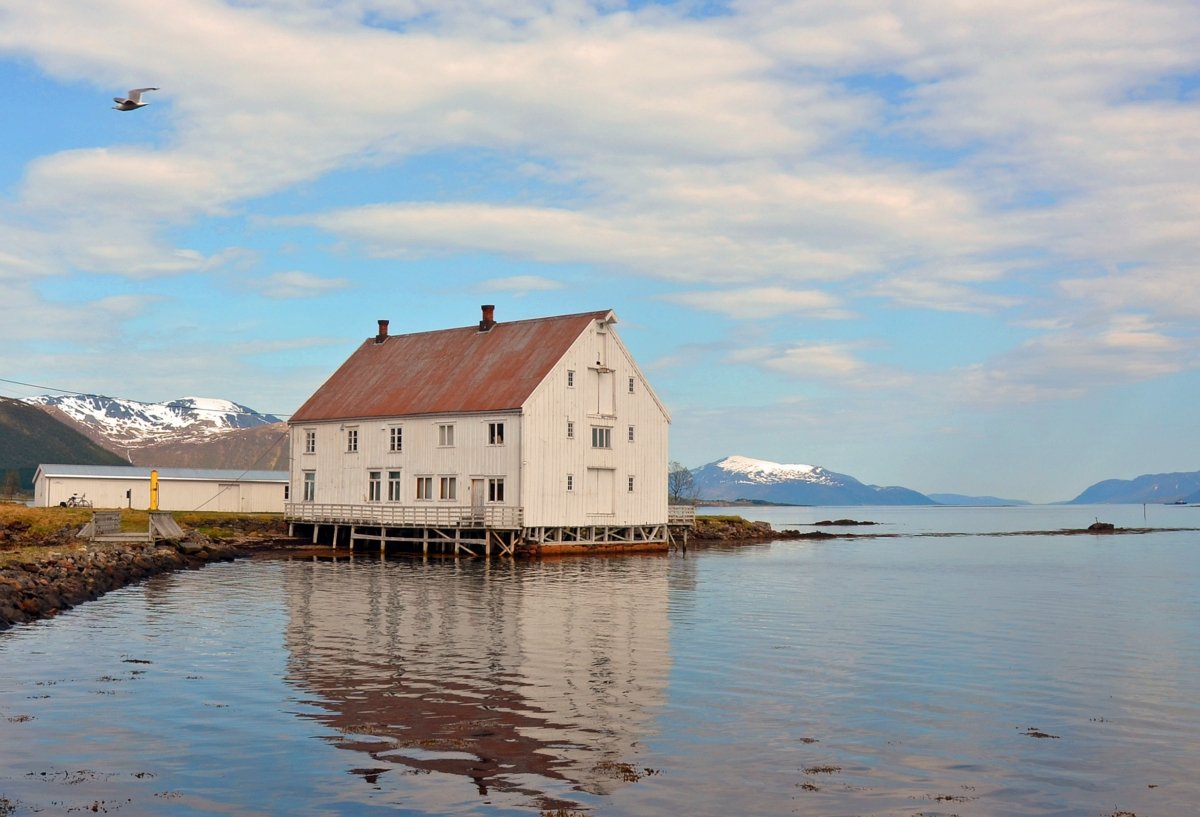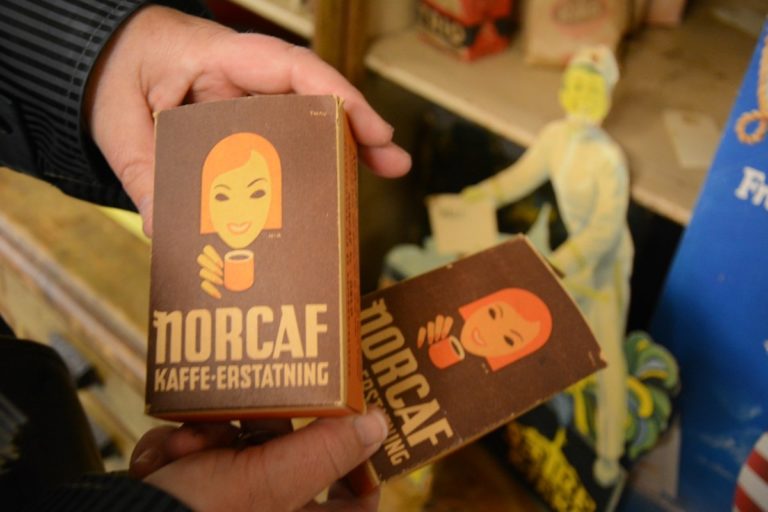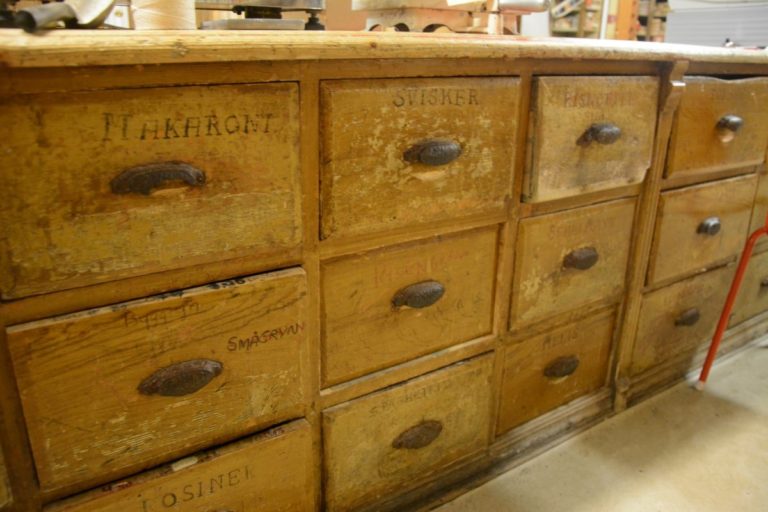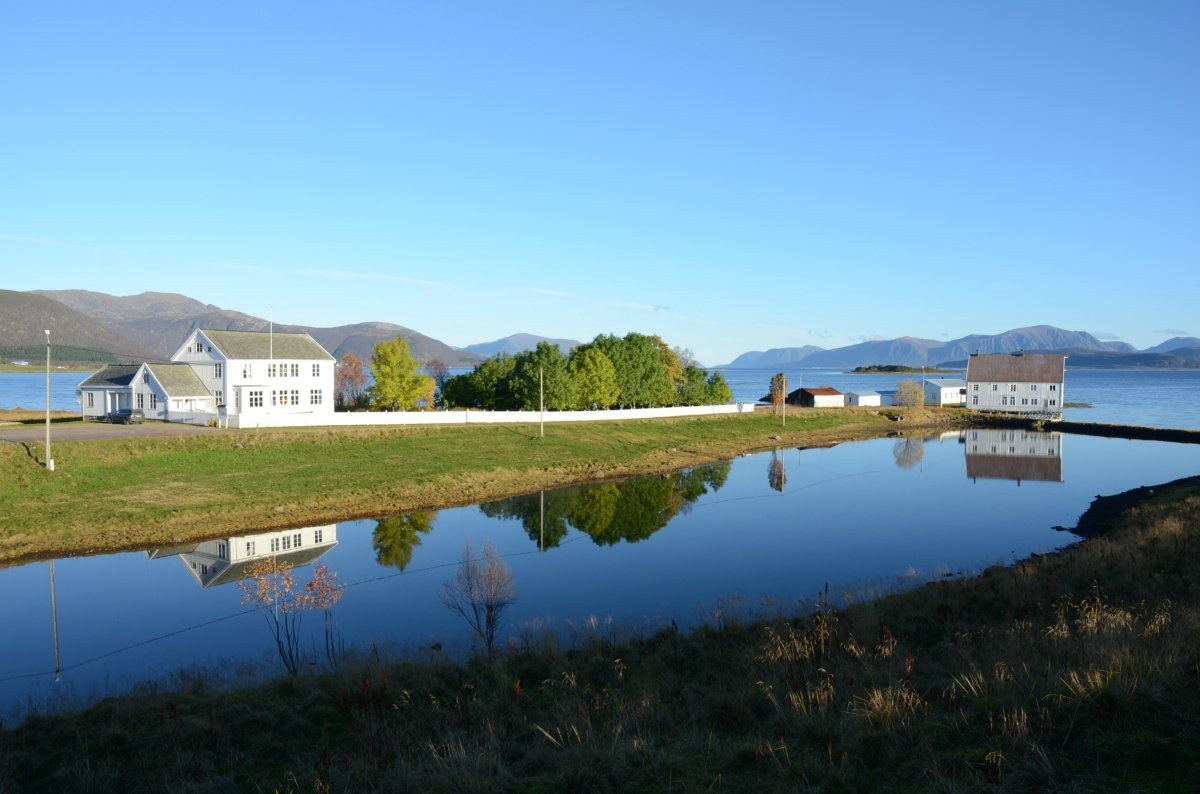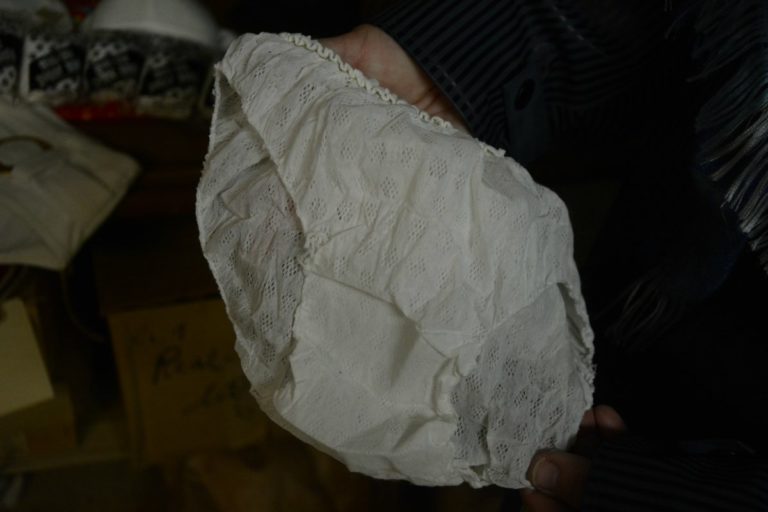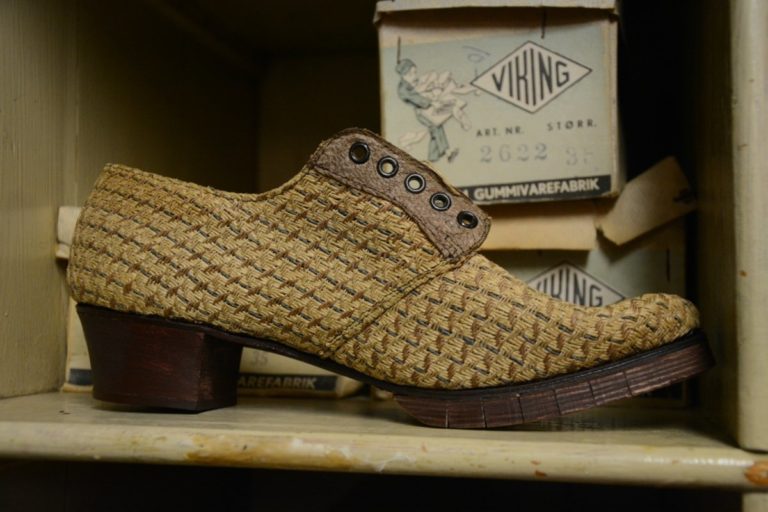Macaroni sold by weight, disposable briefs and traditional brooms; the general stores at the trading post at Jennestad make it seem like it was abandoned yesterday. Meanwhile, the main house is a place for peace and contemplation, and is one of Vesterålen’s leading galleries.
The store at Jennestad, 8 km (5 miles) north of Sortland, closed in 1982. Since then, the store has remained untouched, and visitors can see a completely intact shop with a range of goods spanning the entire 20th century. At the start of the 20th century, Jennestad was a serious competitor to the trading post at Sortland, but by the time it closed the store must have seemed like a deserted backwater.
The store stocked 14,000 kinds of goods
In its heyday, the store stocked 14,000 kinds of goods. Thousands of them can still be seen in the store today. Tights, men’s formal shoes and 1960s disposable underwear dressed the local population. Girls from Sortland often went on excursions to Jennestad in the 70s, the age of the hippies — the place was a goldmine. Gloria polish, Sunlight soap and Salmiak soap were all essentials. Cups decorated with rose-buds could be filled with Ceylon tea from colourful boxes.
There is a full array of bits and bobs
Goods sold by weight were kept in drawers beneath the counter. Prunes, the favourite vegetables of the time, macaroni, raisins, almonds, peas and matches were split up, poured into bags and sold by weight. From the ceiling hang egg whisks, buckets and traditional brooms. At Jennestad, it must have been difficult to throw things away, because bags containing substitute coffee from the Second World War made from peas have been kept too. You can also get a pair of shoes made from cellulose with wooden soles; the associated ration cards are on display.
Propoganda was everything back then
Faded advertising posters reveal an age when ideals were different. The nice man from Pall Mall promises “the best taste from the USA”, while Flott cooking fat is the best for Christmas baking apparently. “There’s white and there’s Blenda white” too, and Toy is refreshing. Melange margarine doesn’t taste of margarine, and Bergene Easter marzipan uses just a broad smile and 60s chic as its sales pitch. But our favourite is Vesteraalskes Kystruter; “our experience is your guarantee”. People from Vesterålen are dependable!
Galleri Jennestad adds a contemporary touch
While the general store is a hive of activity, there is a more restrained atmosphere in the main house. The house itself in the white-painted Swiss style from 1917 is well preserved with its high ceilings and tall, elegant windows facing out towards the sound of Sortlandssundet and the mountains of Hinnøya. Sadly, the former elegant interior is now no more, yet this has created extensive surfaces to be filled with contemporary art. Jennestad becomes of Vesterålen’s leading galleries during the summer.
The word, the note and the image
Three large rooms collectively make up the gallery. They each have a separate theme: the word, the note and the image, as reflected in the decor. A new exhibition is held here every summer and over the years well-known names such as Håkon Gullvåg, Niko Widerberg, Håkon Bleken and Frank Brunner have all held exhibitions here. Concerts and events also take place here throughout the season.
Jennestad trading post was preserved by industry decline
The general store at Jennestad dates from 1871, while the main house was built in 1917. During this period, Jennestad was a prominent centre in Vesterålen, and fish were traded in the villages on the seaward side of the Vesterålen peninsula. Graphite was mined in the hill behind and the hinterland is a rich agricultural area. Yet Sortland, situated 8 km (5 miles) further south, has a better harbour, and with the dredging of the Risøyrenna channel in 1922 and the arrival of the Hurtigruta coastal ships at Sortland, Jennestad began to fall on hard times. It is this very decline that has left Krambua so well preserved.
Visit Jennestad
During the summer, Jennestad once again becomes busy. People from Sortland cycle the 8 km (5 miles) to see the exhibition, eat waffles in the gallery and look round Krambua. You can still shop in Krambua; they sell traditional toys, handicraft goods and delicious sweets. The gallery is privately owned, while Krambua is part of Museum Nord.
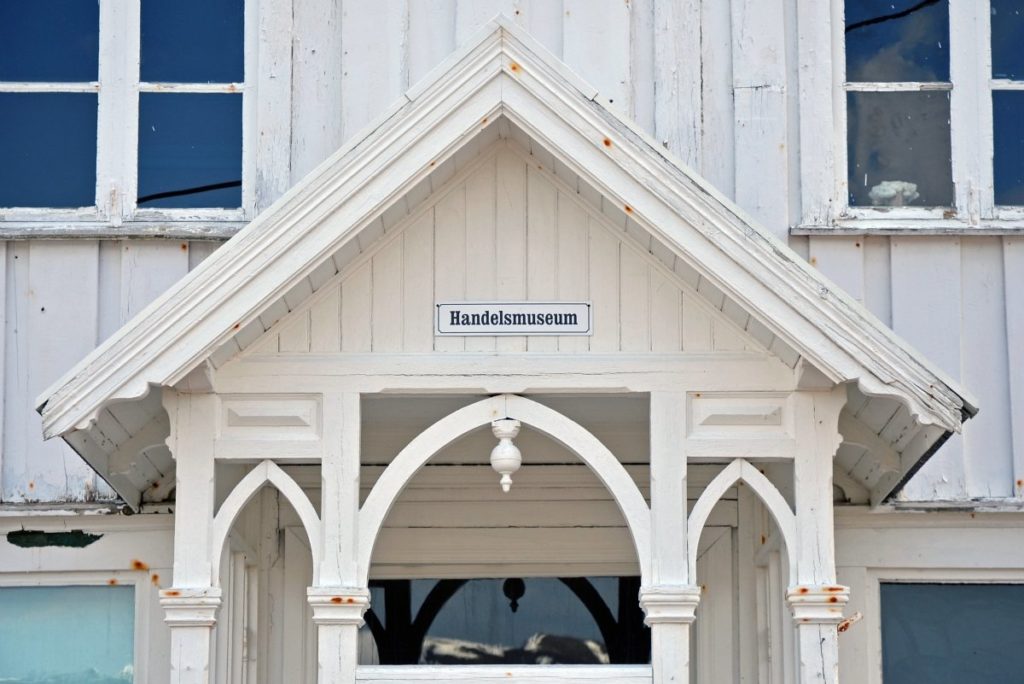

Visit Vesterålen
For all the information you need about visiting Jennestad trading post and the surrounding region, simply check out the Visit Vesterålen webpage.
